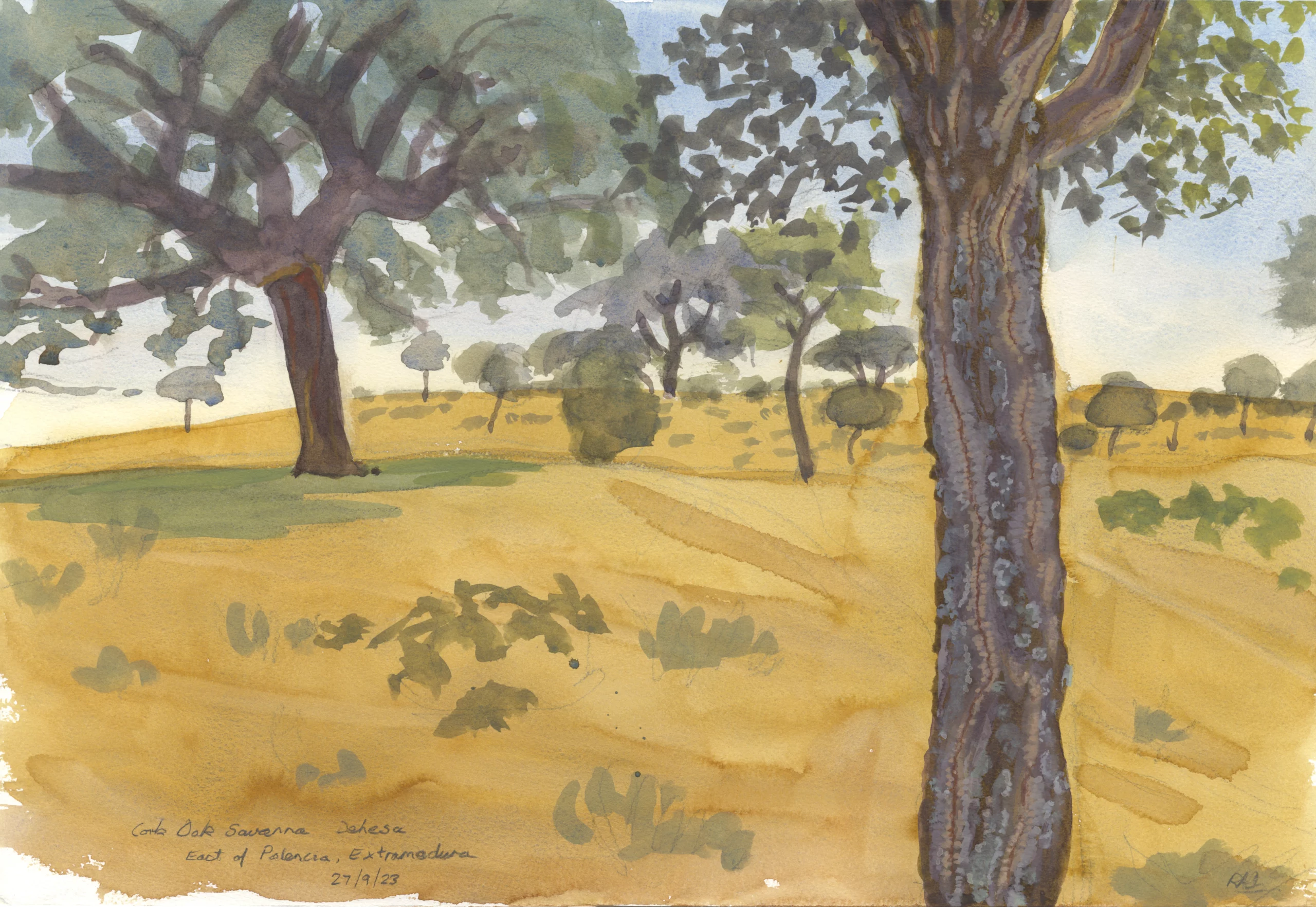Description
The bark of the Cork Oak Quercus suber is fire-adapted. It protects the sensitive vascular tissues of the tree from extreme heat to such a degree that immediately after a fire, this species of tree can spontaneously sprout from multiple places along its stem and branches making it a highly successful competitor in arid, fire-prone environments. The bark, which can grow to the thickness of a human arm, has value and supports a large industry of silviculture or tree-growing in this part of the Mediterranean. Cork oak savannas are incredibly rich biologically and the value in the cork has a beneficial consequence for conservation in that great forests of these trees are protected and manicured by land-owners across Spain and Portugal. But the same property value had a consequence for Mandy and I on our painting trip because every patch of forest is safeguarded by rolls of barbed wire and security gates. We really battled to find places to stop and study these gentle graceful trees, especially those with a natural coat of bark that had not yet been harvested. The unharvested bark has very soft colours and a thick soft texture of peeling greys encrusted with lichens. When the bark is removed (every nine years usually, and has to be done in the rainy season) the trunks are a stunning sangria colour deepening with time to a dark Rioja red. So we were lucky to find this location on our way north out of Extremedura just East of Plasencia where the site was shared with historic dolmens and open to the public to stop and look at. Clearly the trees had been highly significant too to the human ancestors in this special place. We parked in the dense shade under the big harvested Cork Oak to the left of the painting and while I painted the scene (van edited out) Mandy was joined by a herd of goats with jangly bells and a beautiful friendly sheep dog following them about.





Reviews
There are no reviews yet.